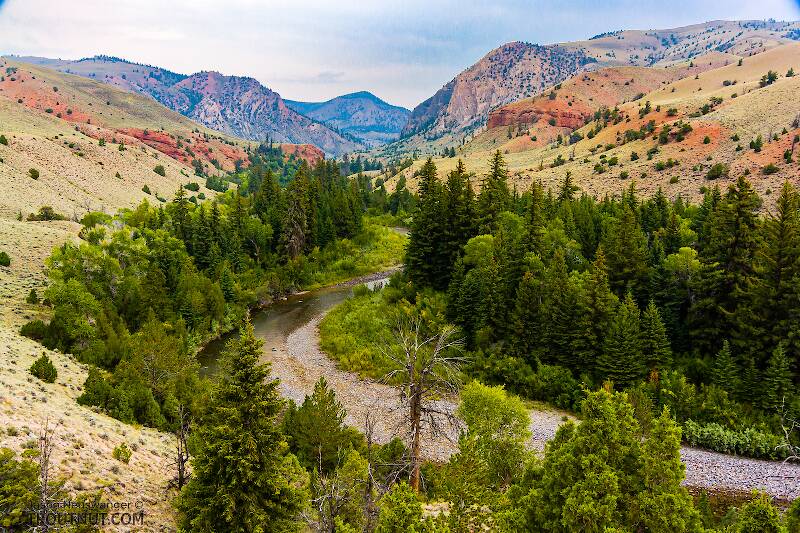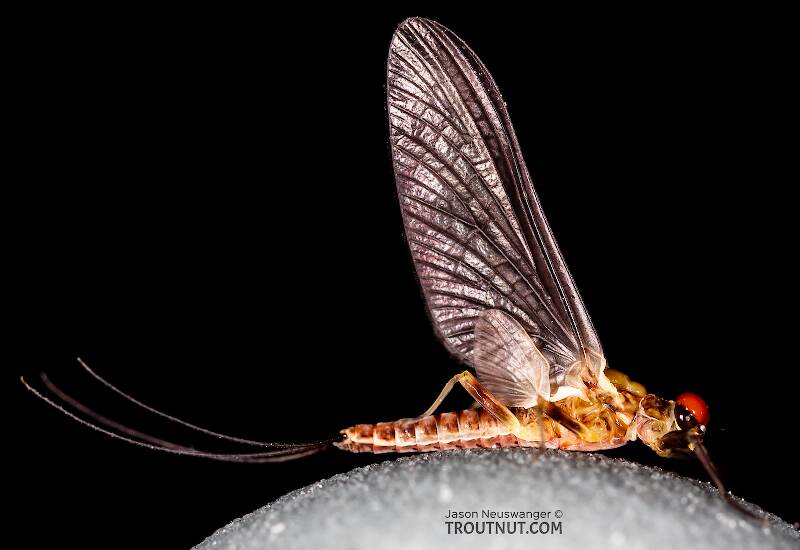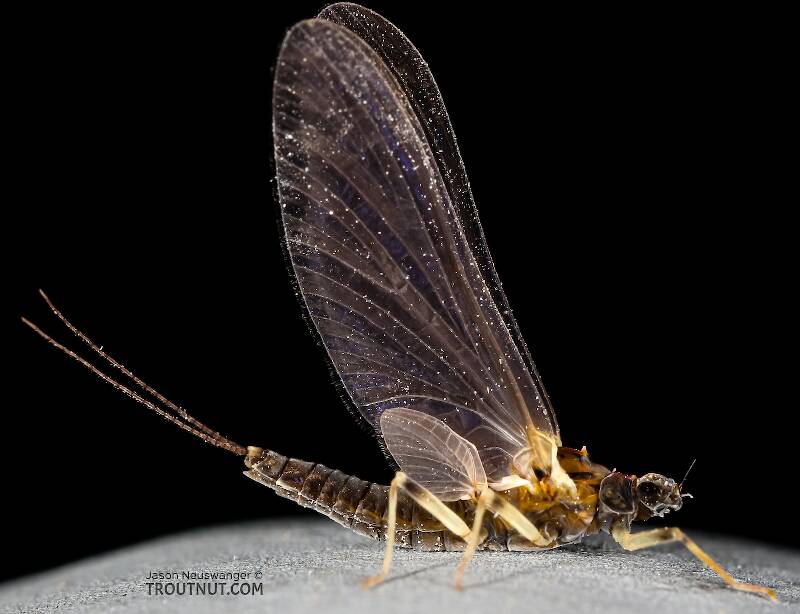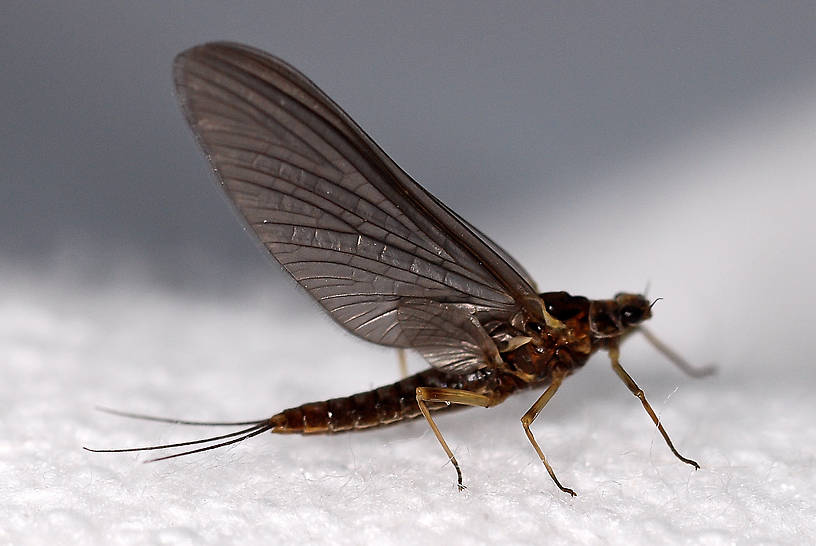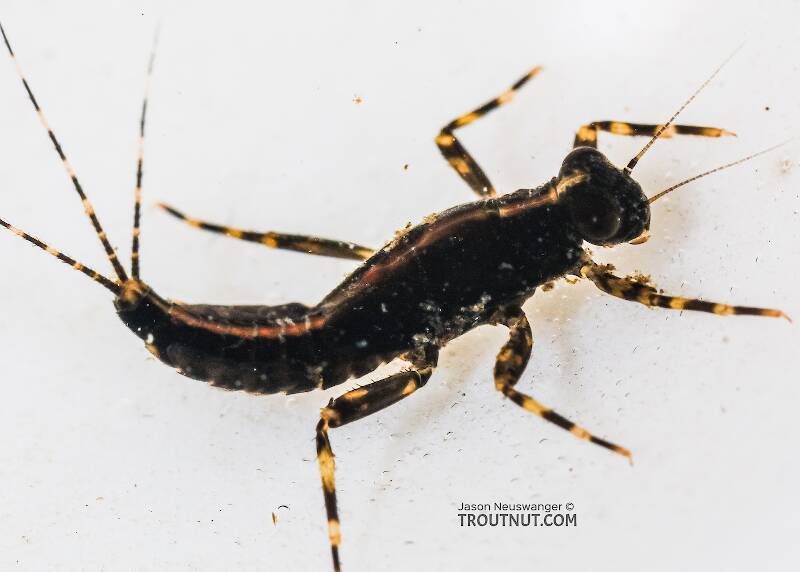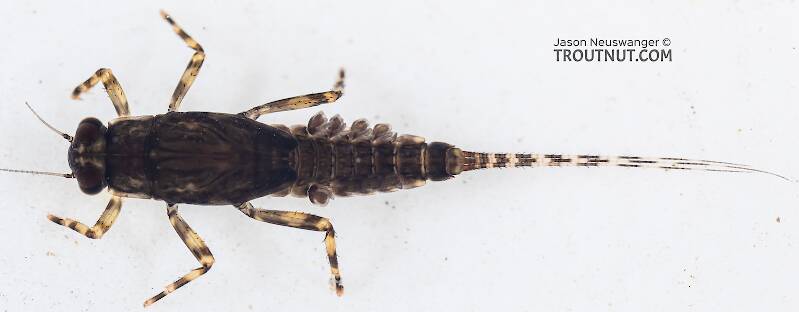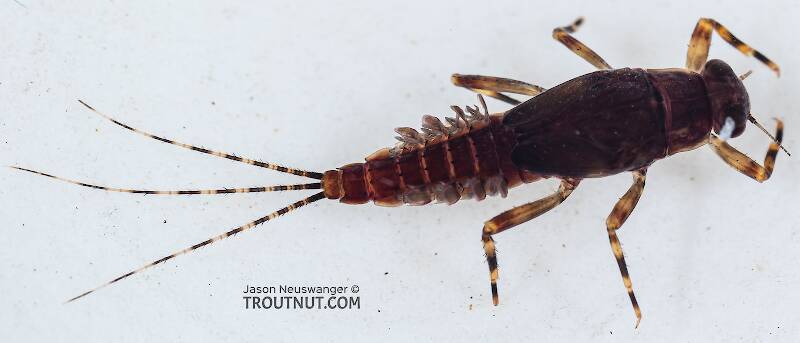
Blue-winged Olives
Baetis
Tiny Baetis mayflies are perhaps the most commonly encountered and imitated by anglers on all American trout streams due to their great abundance, widespread distribution, and trout-friendly emergence habits.


Mayfly Species Ephemerella tibialis (Little Western Dark Hendricksons)
As with many of it's sister species it is widely adaptable and may be variable in its appearance. Scientific literature and many angling sources describe it as a small dark mayfly. Not everybody agrees. Ralph Cutter, West Coast author of several angler/entomology books and articles describes it in Sierra Trout Guide as a much larger pale mayfly and dubs it the Creamy Orange Dun. He also mentions the nymph as being easy to recognize by the faint dorsal stripe running down its back and its often fiery brownish red color. These descriptions also match a variation of the ubiquitous and common Ephemerella excrucians.
Where & when
Known distribution covers all the mountainous regions of the West excepting the California Coast. It is especially adaptable to many habitats.In 12 records from GBIF, adults of this species have been collected during July (58%), August (25%), and June (17%).
In 27 records from GBIF, this species has been collected at elevations ranging from 95 to 9500 ft, with an average (median) of 7835 ft.
Species Range
Spinner behavior
This is the only spinner (imago) in the genus with dark blackish eggs. General consensus is these spinner falls are rarely important to the angler.Physical description
Most physical descriptions on Troutnut are direct or slightly edited quotes from the original scientific sources describing or updating the species, although there may be errors in copying them to this website. Such descriptions aren't always definitive, because species often turn out to be more variable than the original describers observed. In some cases, only a single specimen was described! However, they are useful starting points.
Nymph
A slender species probably allied to the Ephemerella needhami group; only the nymph is known; lateral extensions of the abdomen inconspicuous; dorsal spines present.
Head and thorax smooth. Maxillary palp weak but perfect in form. Antennae pale. General color pale reddish brown. Wing pads and the mesonotum anterior to them dark brown in mature nymphs. Legs pale, with no conspicuous markings. 6 to 7 denticles on each claw. Hind leg rather long.
Abdomen relatively long and slender; middle segments slightly wider than the basal and apical ones. Lateral extensions inconspicuous. Postero-lateral spines on segments 4-9. Gills borne on segments 3-7. Dorsal spines present on tergites 2-8; short and inconspicuous on 2 and 3, well developed on 5-7. Anterior margin of each tergite pale. Posterior margin often narrowly dark brown; remainder reddish brown. Rather large lateral patches may be present next to the gills on the middle segments. No definite ventral markings. Tails pale, almost bare at base and tip, and with only a few short spines in the middle area; in mature nymphs, with narrow dark half-rings at the base
Male Spinner
Wing length: 8 mm
A member of the serrata group (now a synonym of Serratella serrata); abdominal segments of male translucent whitish on the anterior margins; tails deep smoky; fore tibia twice as long as the femur.
General color of male imago deep purplish brown. Thorax almost blackish dorsally. Fore femur pale smoky yellowish, tibia deep smoky, tarsus paler than the tibia; tibia fully twice as long as the femur. Middle and hind legs dull yellowish, the femora with reddish bands apically. Wings vitreous; venation pale grey-brown, the cross veins rather more distinct than is usual for this group. Anterior margins of abdominal segments 3-8 narrowly whitish, translucent. Sternites with indications of dark ganglionic blotches. Forceps reddish basally, blackish distally. Penes blackish (see fig. 156). Tails deep smoky, slightly darker at the joinings.
Specimens of the Mayfly Species Ephemerella tibialis
1 Male Dun
2 Female Duns
3 Nymphs
Discussions of Ephemerella tibialis
Start a Discussion of Ephemerella tibialis
References
- Arbona, Fred Jr. 1989. Mayflies, the Angler, and the Trout. Nick Lyons Books.
- Knopp, Malcolm and Robert Cormier. 1997. Mayflies: An Angler's Study of Trout Water Ephemeroptera . The Lyons Press.
- Needham, James G., Jay R. Traver, and Yin-Chi Hsu. 1935. The Biology of Mayflies. Comstock Publishing Company, Inc.
Mayfly Species Ephemerella tibialis (Little Western Dark Hendricksons)
Species Range
Common Names
Resources
- NatureServe
- Integrated Taxonomic Information System
- Global Biodiversity Information Facility
- Described by McDunnough (1924)

